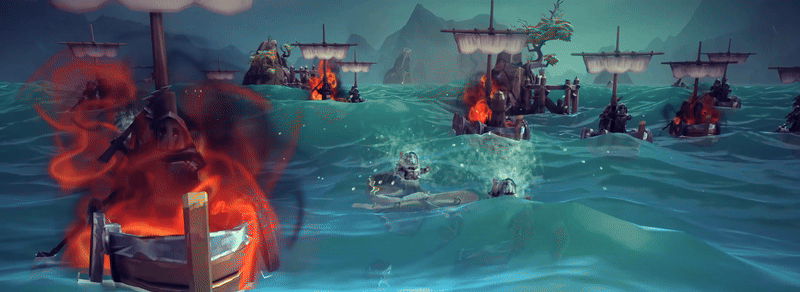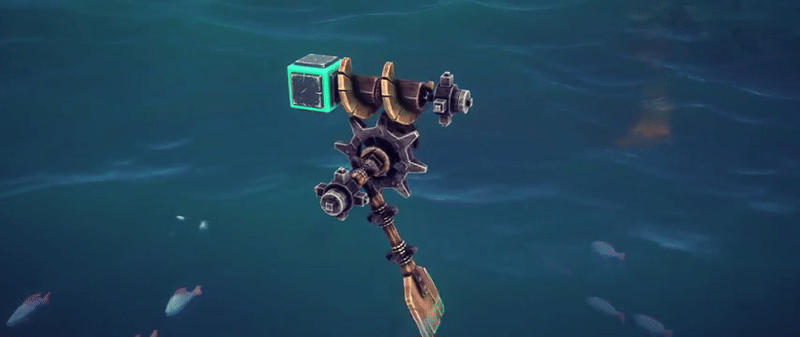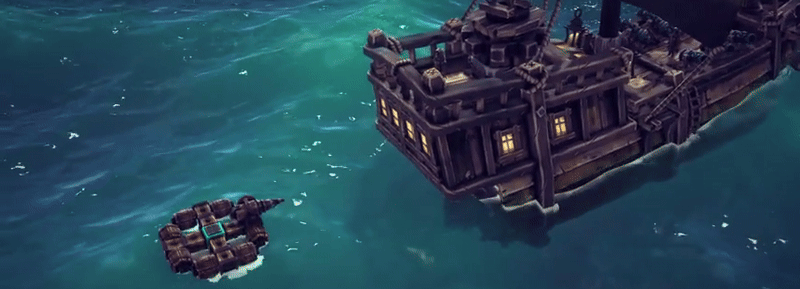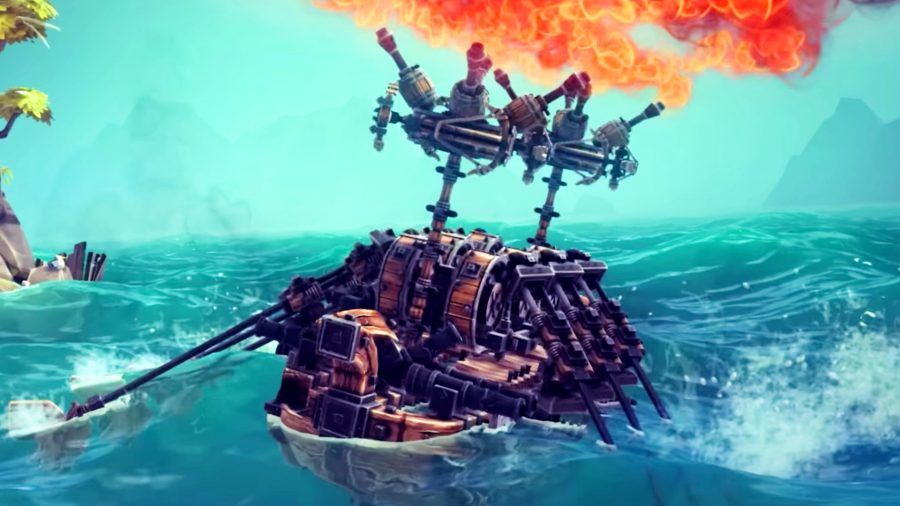Hello Everyone!
In this week’s post we’re going to talk about building for The Splintered Sea’s water environments, explaining new mechanics you’ll need to consider and showing you some new tools to help with machine building.
https://store.steampowered.com/app/2165710/Besiege_The_Splintered_Sea/
Building for water presents a more complex challenge than building machines for land or maybe even those that fly. We have worked to make aquatic machine building as accessible as possible, while maintaining the complexity of physics simulation you’ve all come to expect from Besiege.
With that said, we advise you to start simple and build your understanding of The Splintered Sea’s water mechanics as you go, before attempting large & complex creations.

With the introduction of water to Besiege, every physics object in the game (including blocks) now has a “buoyancy” value attached to it. The more buoyant a block is, the more mass or other external forces are needed to sink it.
Some blocks are more buoyant than others, like wooden blocks, but we’ve also added Barrel blocks whose buoyancy can be customized to much higher values than any other block. Conversely, the Ballast block can be used to increase a machine’s overall mass, or density of mass in a specific area to help balance it. This can be particularly useful when constructing large ships.

If you want to build a machine that floats, you need to ensure it's overall buoyancy exceeds it's overall mass. To make a submarine, something designed to be underwater by default, you'll need to balance it's mass & buoyancy, making it "neutrally buoyant". This will mean you're not constantly fighting against a rising or sinking force.

Just as each machine in Besiege has a “center of mass”, the same is true of buoyancy. Balancing your “center of buoyancy” is essential to ensuring your machine doesn’t become lopsided or even capsize.
Besiege already has a handy tool that displays a machine’s “center of mass” and to aid you with building for water we’ve added a “center of buoyancy” visualization to the same tool. The closer together your centers of mass & buoyancy are, the more stable and controllable your machine is likely to be. A machine’s “center of buoyancy” is only calculated using blocks that are submerged in water, so you’ll need to lower the hull of a ship beneath the surface in order to get useful information from it, for example.
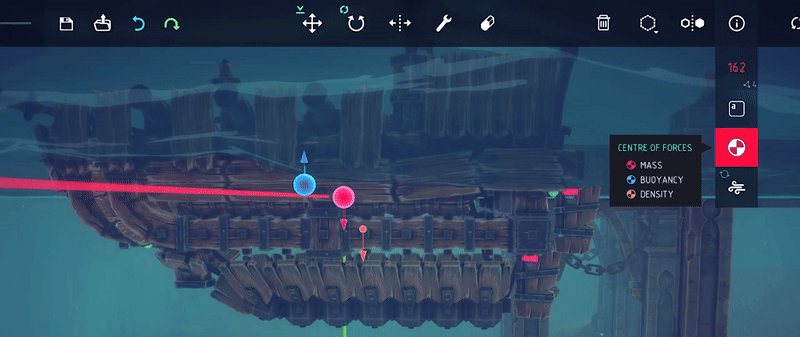
A machine’s “center of mass” is indicated by the red orb and “center of buoyancy” by the blue orb, as shown above.
We’ve also added an orange arrow to the tool that shows the machine's “center of density”. This arrow shows the part of your ship that is most likely to sink first. In the image above for example: the machine’s rear has a significantly higher density than the front, therefore the orange arrow indicates this part of the machine will dip lower in the water. To remedy this, you'd either need to reduce the density of mass at the stern or increase buoyancy there.
Generally, keeping the “center of density” near the center of your machine will ensure it performs optimally, but when making ships you may wish to center it toward the vessel’s stern. This will make the machine’s front more buoyant (relatively) and naturally cause it to rise slightly, enabling the vessel to more easily crest large waves.

Although the aforementioned tools were created to help you build machines for water, they’re only part of the picture and it’s important not to hyper-focus on them. The practices discussed in this post are not applicable to every type of machine and the tool visualizations are not always perfectly accurate. We’re dealing with incredibly complex calculations here and we hope to continue refining these tools as we get more feedback from the community.

Another feature of The Splintered Sea’s water simulation system is “Shape Dependent Drag”, which is applied to blocks that are passing through water. This creates a realistic feel to your machines by causing resistance, as it attempts to push itself through the water.

The image above was taken in our debug mode and shows areas of a machine that are causing the most drag when it moves forward. The colours show the amount of relative drag each block is causing, with red blocks creating the most drag.
Considering the shape of your machine design will be important to ensure it’s able to move through the water easily and in a controllable manner.

In this post we’ve covered the basics of building in water and some best practices that will help when designing aquatic machines. If you’re an avid machine builder and looking to broaden your engineering knowledge with concepts of greater complexity, we’d encourage further reading.
Metacentres and
Center of Floatation are topics which could be of interest, there’s also
this article by
Subhodeep Ghosh which does a good job illustrating these concepts.

That’s all for this week’s post, but we hope it’s given you a glimpse into the exciting new machine-building frontier that is The Splintered Sea! Next week we’ll be taking a look at the expansion’s campaign levels, environments & occupants…
See you next week!
Von
If you haven't already, please consider wishlisting the expansion and check out The Splintered Sea’s steam page for more information! :)





